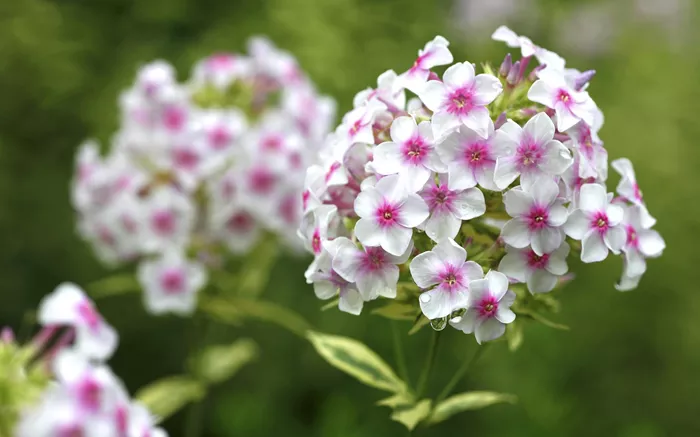Imagine stepping into your garden on a warm summer morning, greeted by vibrant colors and the sweet scent of flowers in the air. Phlox, with its cheerful blooms, has a way of bringing life to any outdoor space. These delightful plants come in a variety of shades, from soft pinks to deep purples, and they are a favorite for many gardeners. But what if you could have phlox in full bloom all summer long? Is there a variety that continues to brighten your garden from spring until fall? Let’s explore the possibilities and uncover how you can enjoy phlox blooms throughout the warmer months.
Understanding Phlox: A Brief Overview
Phlox is a genus of plants that includes both annual and perennial varieties. These plants are highly valued for their bright and beautiful flowers that range in color from white and pink to purple and red. Phlox plants are not only stunning but also relatively easy to care for, making them a popular choice for gardeners of all skill levels.
There are two main types of phlox: Phlox paniculata (garden phlox) and Phlox subulata (moss phlox). While both are beautiful, they have different growing habits and bloom times. Garden phlox typically blooms in midsummer, while moss phlox starts flowering in spring. But the question remains, can any phlox bloom throughout the entire summer?
Can You Find A Phlox That Blooms All Summer?
The simple answer is no—no phlox variety blooms continuously all summer long. However, some phlox varieties bloom for a long period, and with a strategic planting plan, you can enjoy phlox flowers in your garden from early spring until late summer. Here’s how:
1. Early Blooming Phlox: Moss Phlox (Phlox subulata)
Moss phlox is one of the first phlox varieties to bloom in spring, often in April or May, depending on your climate. Its small, star-like flowers come in shades of pink, white, and purple. While moss phlox only blooms for a few weeks, it can be combined with later-blooming phlox varieties to extend the flowering period in your garden.
2. Midseason Bloomers: Garden Phlox (Phlox paniculata)
Garden phlox blooms from midsummer (typically June to August) and is often what people think of when they imagine phlox. These plants have larger flowers and can be found in a range of vibrant colors. The blooming period is relatively long, but it does not last throughout the entire summer.
3. Long-Blooming Varieties
Some varieties of garden phlox are bred to have a longer blooming period, lasting into early fall. While they do not bloom all summer, they can keep your garden looking colorful for a more extended period compared to typical phlox varieties.
4. Overlapping Bloom Periods
To achieve a continuous display of phlox flowers in your garden, you can plant varieties with overlapping blooming periods. For example, you could combine moss phlox, which blooms early in the season, with a long-blooming garden phlox variety. This strategy will allow you to enjoy phlox flowers from spring through to fall.
How to Care for Phlox to Ensure a Long Blooming Season
To maximize the blooming period of your phlox, proper care is essential. Here are a few tips:
Sunlight: Phlox plants thrive in full sunlight. Ensure they get at least six hours of direct sun each day to encourage strong growth and abundant blooms.
Soil: Phlox prefers well-drained, fertile soil. Amend the soil with organic matter to improve its texture and fertility.
Watering: While phlox is relatively drought-tolerant once established, it does best with regular watering during dry spells. Be sure not to overwater, as phlox roots are susceptible to rot in soggy soil.
Deadheading: To encourage more blooms, deadhead spent flowers regularly. This will help direct the plant’s energy toward producing more flowers rather than setting seeds.
Fertilizing: Use a balanced fertilizer in the early spring to provide nutrients for the growing season. Avoid high-phosphorus fertilizers, as they can cause issues with disease.
Popular Phlox Varieties to Try
Here are some popular phlox varieties to consider for a longer blooming season:
1. Phlox paniculata ‘David’
This cultivar is known for its large white flowers and mildew resistance. ‘David’ typically blooms from July to August, but with proper care, it can last a little longer.
2. Phlox paniculata ‘Bright Eyes’
With its bright pink and white flowers, ‘Bright Eyes’ blooms from mid-summer into fall, offering an extended period of color.
3. Phlox subulata ‘Crimson Beauty’
A variety of moss phlox, ‘Crimson Beauty’ produces vibrant red flowers in spring and is perfect for ground cover or rock gardens.
Conclusion
While no phlox variety blooms continuously throughout the summer, you can still enjoy phlox flowers for a long period by choosing the right varieties and planning your garden carefully. By planting early-blooming moss phlox alongside midseason or late-blooming garden phlox, you can have colorful flowers in your garden from spring through to the fall. With the right care, phlox can be a stunning and reliable addition to any garden.
FAQs About Phlox
1. What is the best time to plant phlox?
Phlox should be planted in early spring or early fall. Planting in the spring gives the plant time to establish roots before the summer heat, while fall planting allows the plant to settle in before winter.
2. Can phlox grow in shade?
Phlox prefers full sunlight but can tolerate partial shade. However, in shaded areas, the plants may not bloom as profusely as they would in full sun.
3. How do you prune phlox to encourage more blooms?
To encourage more blooms, prune phlox in the early spring, cutting back dead or damaged stems. Deadheading spent flowers throughout the growing season will also help encourage new blooms.
4. Are phlox plants prone to pests?
Phlox can be affected by pests such as aphids and caterpillars. Regularly check the plants for signs of pest infestations and use organic insecticides if needed.


